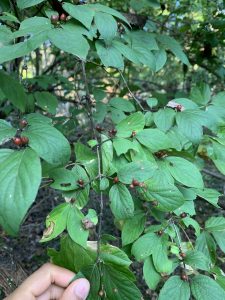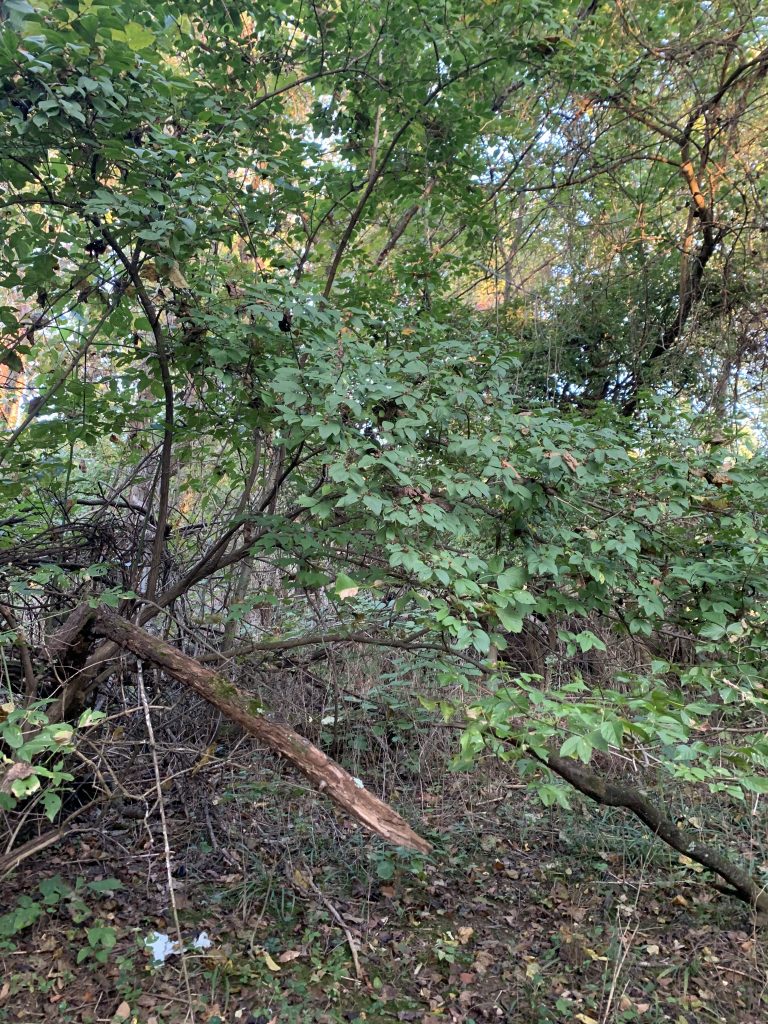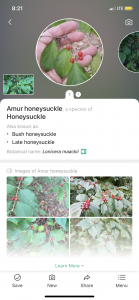
I went at 10/6/20 at 7:50am, about right when I woke up. Holy crap I was tired. It was 43°C, so I went out wearing two layers of clothes to stay moderately comfortable. I don’t think I’ll do this in the morning again; this was not good.
Right at my sit spot, behind me (SE) I noticed a tree with little red cranberry-looking buds by its leaves. I had no idea what it was, but I did want to see if the buds were edible. Thankfully, I decided to wait.

The leaves appeared as healthy as I imagine any leaves would be in the wild. They had holes in them, probably from insects feeding on them, but they weren’t dying. The medium-small leaves, slightly curved inwards at the petioles, felt rough with deep veins. The leaves were wide/curvy, but ended with a single thin tip. Most of the leaves curved downwards at the tip. There was little to no odor on them. Growing by the leaves were small, bright red buds. The trunk of the tree was thin, and growing in a curved manner, but that’s likely due to another large tree branch growing over it. The wood, although patterned, felt smooth.

I used the app PictureThis to identify the plant. It turned out to be Amur honeysuckle (Lonicera maackii). It was free, easy, and fairly quick. I just went into the app, uploaded a picture containing the leaves and buds, and got a result. I looked at two other honeysuckle species besides the one that came up to see if their descriptions better fit the plant I found. The other two options were Dwarf honeysuckle, which showed much larger buds than the ones I observed, and Bush honeysuckle, whose leaf tips aren’t as sharp as the ones I saw. From that, I decided that the species I saw was most likely Amur honeysuckle, as its description and photos matched my observations the most. According to the app, Amur honeysuckle is a deciduous shrub that typically grows sweet-smelling, white flowers. Because it grows rapidly, it’s considered an invasive species in many countries, especially because it threatens growth of native species in forest ecosystems. It’s even banned in some U.S. states. Additionally, it’s mildly toxic to humans and may induce nausea, vomiting, diarrhea, and rapid heartbeat. Good thing I didn’t listen to my monkey brain!
Overall, this wasn’t the most entertaining use of my time. Observing an animal, or even an insect, probably would’ve been more interesting. However, since I was in a forested area, there were animals visible for long enough for me to consider a reliable option. And there were no insects visible, possibly because it was so much colder than usual that morning. Oh well, maybe next time.

It is fortunate that you did not eat the strange plant. Honeysuckle are fairly common in gardens where I am from but I have never seen one that looked like this. I guess I didn’t realize how many different species of honey suckle plants that there were, so it was interesting to hear about.
Honeysuckle are fairly common in gardens where I am from but I have never seen one that looked like this. I guess I didn’t realize how many different species of honey suckle plants that there were, so it was interesting to hear about. I am very glad to hear that you did not eat the unknown plant.